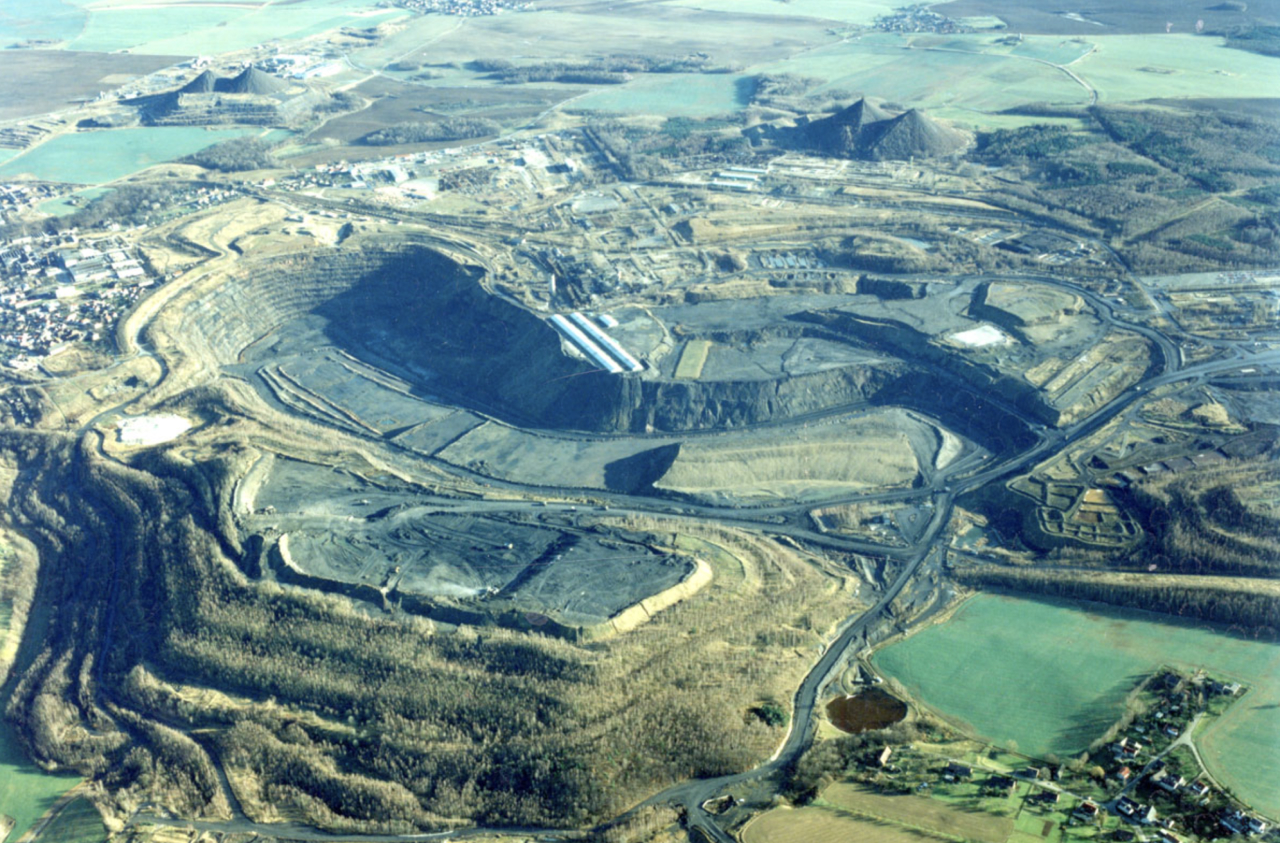Lichtenberg opencast mine
One of the most obvious legacies of SDAG Wismut. A hole almost one kilometer wide and two kilometers long was created in the earth.
The initial situation
One of the most obvious legacies of SDAG Wismut is the Lichtenberg opencast mine. Here, where the towns of Schmirchau, Lichtenberg and Gessen were once located, a hole almost one kilometer wide and two kilometers long was created in the earth. Its greatest depth was 230 meters. A landscape of dumps had formed around the opencast mine.
A huge range of technical equipment was used to extract ore. The uranium-containing rock was extracted using blasting. In order to mine the ore, blast holes were drilled into the rock, and the subsequent blasting then loosened the heap so that it could be transported away.
At times there were over 150 vehicles rolling here that were used to transport the raw materials. The extracted ore began to be transported with so-called SIS tippers, which had a payload of 3 tonnes, later followed by vehicles with 6 tonnes and the well-known KRAS tippers with a payload of 12 tonnes - for comparison: the largest dump trucks from Wismut GmbH used to rehabilitate the opencast mine, were able to load a total of 136 tons of rock. The so-called secondary rock was then conveyed to the heaps via a conveyor and settling system. As early as 1976, ore extraction in the Lichtenberg opencast mine had to be stopped because the city limits of Ronneburg in the north and the Schmirchau mine facilities in the east made expansion impossible.
A mountain is poured out of the hole
Until 1990, among other things, Material from surrounding shafts was brought into the opencast mine. With the start of the renovation work on behalf of the Federal Republic of Germany, the plan was to completely fill the opencast mine.
The renovation concept for the Ronneburg site envisaged relocating all dumps south of the BAB 4 (except dump 381) to the Lichtenberg opencast mine. At the beginning of 2008, the Ronneburg protective dam heap was the last heap at the Ronneburg site to be relocated, thus ending the heap relocation. With the renovation of the Lichtenberg opencast mine, Wismut GmbH built a landscape structure in which over 125 million m³ of stockpile material was safely stored.



The landscape structure as a viewing point: The Schmirchauer Höhe
After 28 years of renovation, one of the most attractive viewpoints in eastern Thuringia has grown just outside Ronneburg. The newly created mountain on the site of the former opencast mine was named "Scmirchauer Höhe" in 2010 to commemorate the destruction of the communities and is freely accessible to the public.
The newly created mountain on the site of the former opencast mine was named "Scmirchauer Höhe" in 2010 to commemorate the destruction of the communities and is freely accessible to the public. The “New Ronneburg Landscape” was presented at the Federal Garden Show in 2007. The special architecture is intended to illustrate to future visitors the work carried out on Germany's largest environmental project, but also the mining activities in the region.

